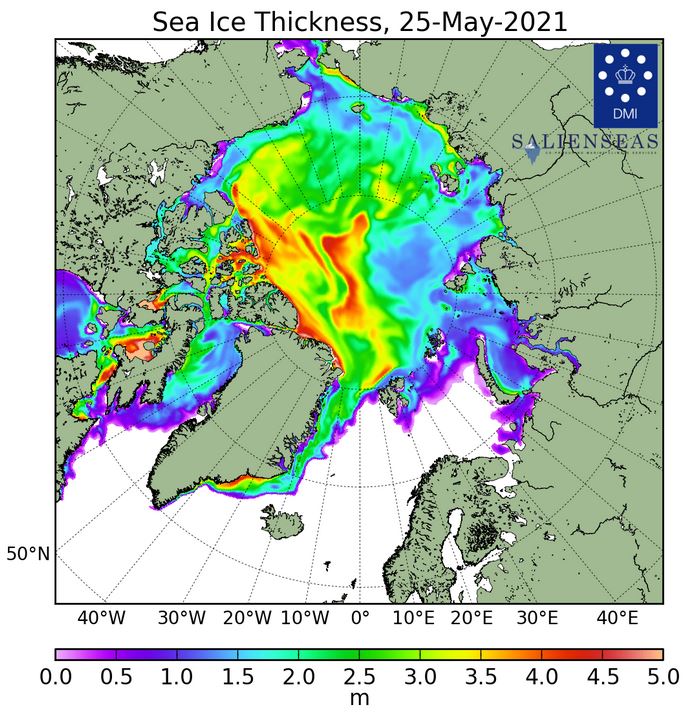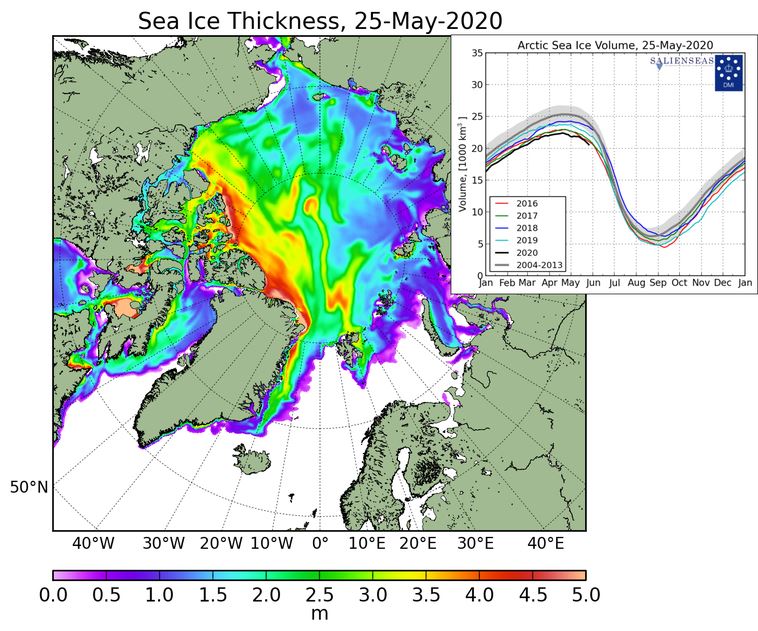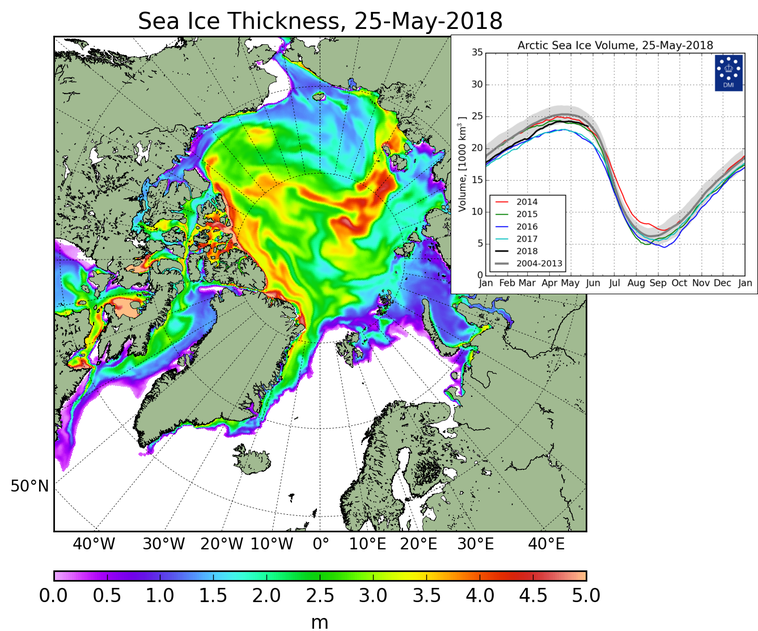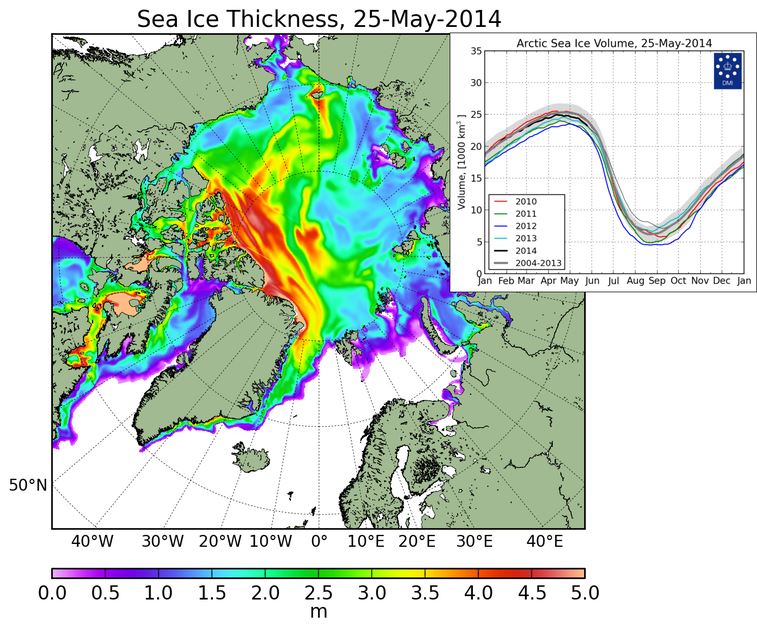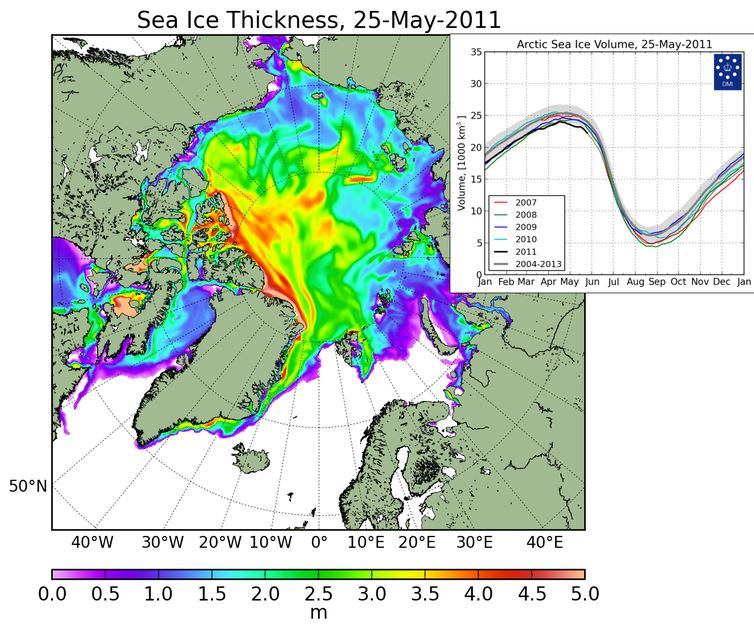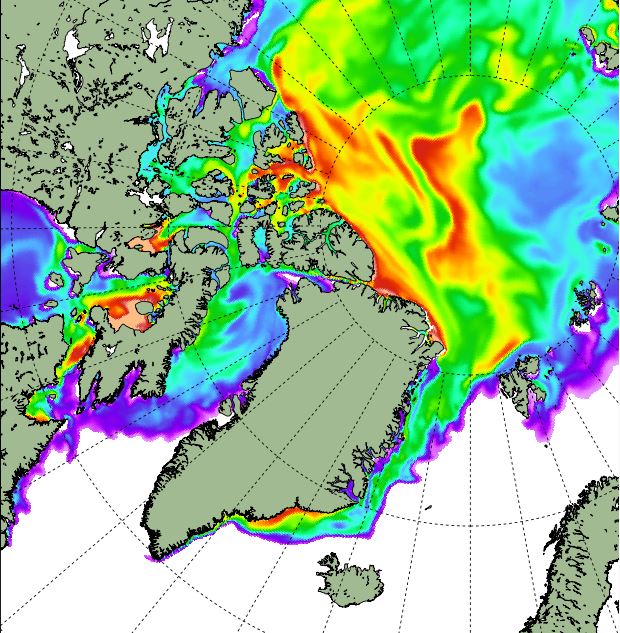Just in case you heard that Arctic sea ice was disappearing, here is proof from Susan Crockford that the ice is stable and more thick ice is emerging. Lots of ice for the polar bears to hunt seals.https://t.co/Q95yrcnhuR
— Patrick Moore (@EcoSenseNow) May 28, 2021
Surprising sea ice thickness across the Arctic is good news for polar bears
This year near the end of May the distribution of thickest sea ice (3.5-5m/11.5-16.4 ft – or more) is a bit surprising, given that the WMO has suggested we may be only five years away from a “dangerous tipping point” in global temperatures. There is the usual and expected band of thick ice in the Arctic Ocean across northern Greenland and Canada’s most northern islands but there are also some patches in the peripheral seas (especially north of Svalbard, southeast Greenland, Foxe Basin, Hudson Strait, Chukchi Sea, Laptev Sea). This is plenty of sea ice for polar bear hunting at this time of year (mating season is pretty much over) and that thick ice will provide summer habitat for bears that choose to stay on the ice during the low-ice season: not even close to an emergency for polar bears.

Ice thickness over the last decade at 25 May (selected years to 2011, the earliest available)
From the Polar Portal of the Danish Meteorological Institute
North of Svalbard in the Barents Sea and the Southeast coast of Greenland
There is more thick ice north of Svalbard than there was last year, when thick ice caused some trouble for the Arctic research vessel Polarstern. And the thick ice off Greenland this year is hardly surprising, given the current record-breaking accumulations of snow and ice in that area of Greenland (see chart below, from DMI). It must be very cold indeed.
Thick ice in Foxe Basin (west of Baffin Island) this year is to be expected, but in Hudson Strait north of Quebec, not so much (see below, a closeup of the 26 May 2021 chart):
Thick ice along the coasts of the Chukchi and Laptev Seas in Russia seems to be reasonably common, see closeup of the 2021 chart below:
About that “dangerous” tipping point? According to this BBC report (27 May 2021), the WMO model concluded that there is a 40% chance that the global temperature in one year by 2026 being 1.50C higher than pre-industrial levels (we are currently at about 1.20C above that threshold). However, the caveats are rather huge:
The researchers point out that even if one of the next five years is 1.5C above the pre-industrial level, it’ll be a temporary situation.
Natural variability will mean the following few years may be slightly cooler and it could be another decade or two or more before the 1.5C limit is crossed permanently.
The Paris Agreement established the goal of keeping the increase in the global average temperature to no more than 2C and to try not to surpass 1.5C – and that’s understood to mean over a long period rather than a single year.
According to Dr Joeri Rogelj, director of research at the Grantham Institute, Imperial College London, “the 1.5C in the Met Office announcement should not be confused with the 1.5C limit in the Paris Agreement”.
“The Paris targets refer to global warming – that is, the temperature increase of our planet once we smooth out year-to-year variations,” he explained.
“A single year hitting 1.5C therefore doesn’t mean the Paris limits are breached….

